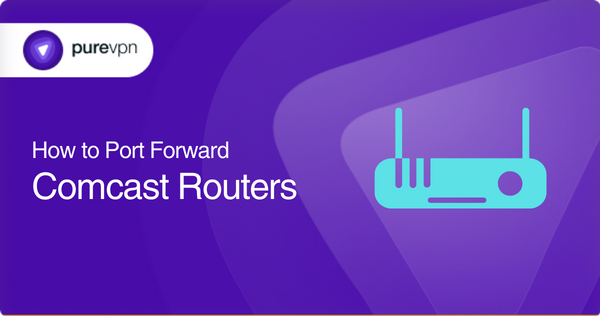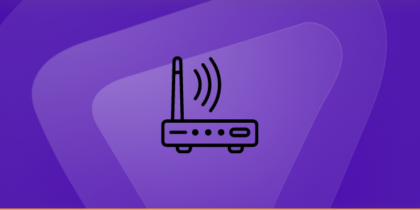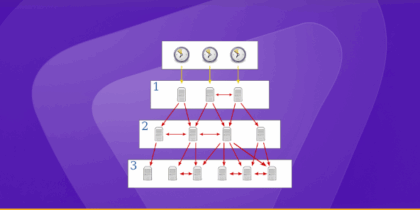Comcast routers allow you to connect to the internet using a cable or fiber optic connection. Comcast offers several different models of routers, including ones that support the latest Wi-Fi standards, advanced security features, and parental controls. Some of them include Xfinity xFi gateway, xFi advanced gateway, XB6 wireless, and more. Here is a complete guide on port forwarding comcast router.

Their modem/routers are designed to provide ultra-fast multi-gig speed capability, have 3x the bandwidth for more reliable connections, and can power hundreds of devices at once, but still lay behind CGNAT to restrict ports. Comcast’s low lag feature also gets drained when blocked by a firewall. Don’t panic! You have a skipper to put your port-forwarding canoe to the harbor.
Let’s get started to know: Manual steps to set up port forwarding, leap CGNAT cutbacks, kick away the firewall and get a basic yet amazing port forwarding add-on, for your needs.
What Is Port Forwarding and Why It Matters
Port forwarding creates a defined path through your router’s firewall, directing specified incoming traffic (by port number) to a designated device inside your home network. Think of it like a secure postal service: when someone sends a letter to your public address and asks for “Room 25565,” the post office directs it to a particular room (your internal device). Without this, unsolicited inbound messages are dropped—making remote access, gaming, and streaming from outside impossible.
Common use cases for Xfinity users include:
- Online gaming: Hosting Minecraft, Call of Duty, or Fortnite servers.
- Remote access: Connecting via Remote Desktop Protocol (RDP) or a personal VPN.
- Security monitoring: Viewing IP camera feeds while away from home.
- Self-hosted services: Running a home web server, FTP, or Plex media server.
Vitals to keep in hand
- The default IP address of your router
- A static IP address for the device you want to forward ports
- The TCP/UDP port numbers and protocols
- The username and password to access your router
Step 1: Open the Xfinity App and Access Port Forwarding
Unlike many routers, Comcast Xfinity doesn’t support port forwarding directly via 10.0.0.1; you must use the Xfinity app or xFi web interface. Follow these steps carefully:
- Log in to the Xfinity app (or log in via
xfinity.comand navigate to xFi). - Tap WiFi at the bottom, then View WiFi equipment.
- Choose Advanced settings, then select Port forwarding.
- Tap Add Port Forward.
Once inside the port‑forwarding interface, pick a connected device from the list (Xfinity only supports devices with an IPv4 address). Then:
- Select a preset application (like Xbox) or Manual Setup.
- Enter your Service Name, Protocol (TCP/UDP), and Start/End ports.
- Tap Apply Changes.
Step 2: Verify Internal Device Setup
Your internal device (e.g., PC, console, or camera) must be ready to receive traffic:
- Ensure it’s powered on and listening on the port.
- Double-check the internal IPv4 address—go to Command Prompt and run
ipconfigon Windows. - Preferably, assign it a fixed (static) IP via DHCP reservation in the app or manually configure its network settings.
Step 3: Confirm the Port Is Really Open
Even if the app shows a rule has been added, that doesn’t guarantee it’s live. Use an external tool like CanYouSeeMe or YouGetSignal to test your external IP and port:
- A “Success” result means everything is working.
- A “Closed” or “Filtered” result means there’s an issue. Common causes include:
- The target device not actually running the service.
- Firewall blocking the port on the device.
- Device assigned an IPv6 instead of IPv4
- Misconfigured or stale static IP—Xfinity recommends using DHCP + MAC binding
- Click “Save” or “Apply” to save.
There you are! All set to open ports. For more details about the router’s configuration, it is better to read the manual.
Ports needed to run on Comcast routers
The default used by most routers are:
Port 80: Port used for HTTP traffic, to access web pages.
Port 443: Used for HTTPS traffic, used for secure web browsing.
Port 53: The port used for DNS traffic, to translate domain names to IP addresses.
Port 25: This is the port used for SMTP traffic, for sending emails.
Port 110: Port used for POP3 traffic, for receiving email.
Open Ports with PureVPN add-on Easily
You might be in a hurry to access out-of-reach ports, this must be making you annoyed. Yes! Opening ports can be a hitch with different routers, ISPs, and system firewalls dragging you back. But then comes a solution. Let’s try to experience it!
Here’s how it works:If you want to port forward without CGNAT barriers, using PureVPN’s Port Forwarding add-on is the easiest way. Here’s how to do it:
- Sign up for PureVPN, include the Port Forwarding add-on, and complete your payment.
- Download and install the PureVPN app for your router and log in with your account details.
- Open the Member Area, click Subscriptions and then Configure next to Port Forwarding.
- Connect to a port forwarding-supported server to activate your settings and bypass CGNAT limitations!
- Select Enable specific ports, enter the ports you wish to forward, and click Apply Settings.

Your solution to accessing and forwarding ports behind CGNAT
Carrier-grade Network Address Translation (CGNAT) is a technology used by internet service providers (ISPs) to conserve the limited pool of public IP addresses available for use on the internet. CGNAT involves mapping multiple private IP addresses to a single public IP address, which can cause issues for some users.
CGNAT can make it difficult to host servers, as the public IP address assigned to the network is shared among multiple users. Multiple users behind the same CGNAT gateway may end up with the same private IP address. This can cause conflicts with some applications that require a unique IP address, such as online gaming or certain VPNs.
Some P2P networks require direct connections between users, which can be challenging with CGNAT, as connections have to be initiated from within the network. This can lead to slow or unreliable P2P connections.
To address these issues, some ISPs offer options to disable CGNAT or provide a public IP address for an additional fee. But, you do not need to worry about all these with PureVPN’s port forwarding add-on in hand.
The shield to secure port forwarding
Opening or restricting ports can expose your personal information. Setting up different routers for port forwarding is irritating too. CGNAT is also holding you back. So here is the rescuer to rely on! PureVPN’s port forwarding add-on provides an easy and convenient way to forward ports to your device. This allows you to access services or applications that your network or ISP may restrict with guaranteed anonymity and security.
Having PureVPN’s port forwarding add-on, as your port assistant will help you explore new dimensions while being online. Have fast downloading, host game servers, access restricted content, share files, and whatnot. Let’s not resort to manual methods of opening ports and explore the user-friendly way to forward ports.
Concluding thoughts
The guide covers whatever you can do to open ports from your end. Comcast routers offer next-generation WiFi technology. Out-of-the-box features become redundant when basic needs like port forwarding are not met through certain routers.
This can be taken care of with PureVPNs port forwarding add-on, to provide you with an easy solution to forward ports effectively. Connect through Live Chat for further assistance.
Frequently asked questions
Here’s how:
1-Log in via the Xfinity app
2-Navigate: WiFi → View Equipment → Advanced Settings → Port Forwarding.
3-Click Add Port Forward, select your device (ensure it uses IPv4), and enter port range & protocol.
4-Save settings, disable Advanced Security if needed, and test with an external port‑scanner.
5-If problems occur, consider resetting the router, ensuring IPv4, and using the Xfinity chat assistant routing workaround via Chrome.
Yes, you can. Port forwarding can be done with an Admin tool or through a VPN such as PureVPN.
Port triggering is an advanced internet setting for your Wireless Gateway that is used to improve online gaming, video conferencing, and online chat applications.
Most routers have 192.168. 1.1 as their default address. You can also check this on your router’s manual or ask your ISP providers.
Yes, this is usually done to protect your system from potential threats. Comcast offers this scrutiny to protect any malicious actors affecting your system.








